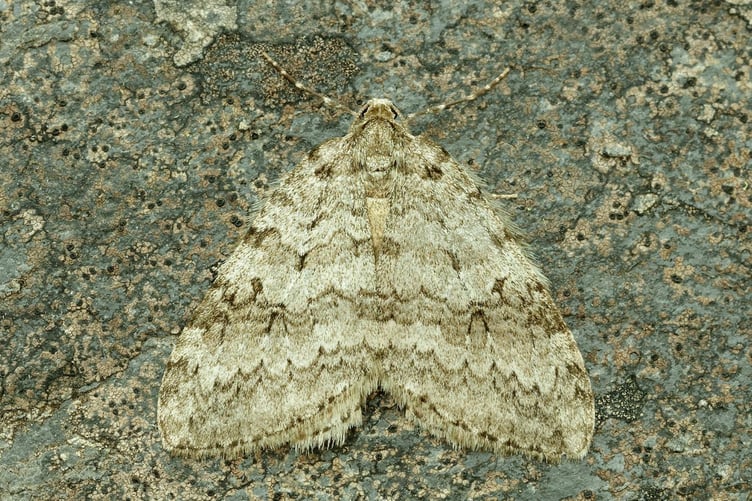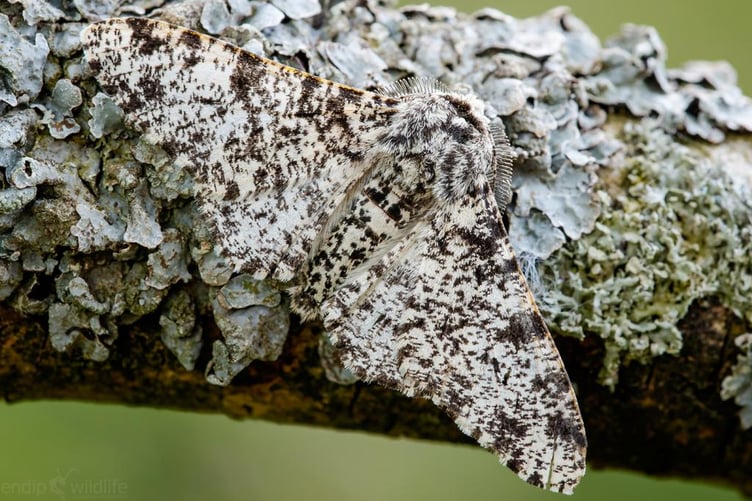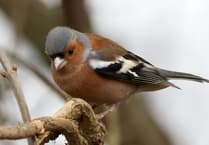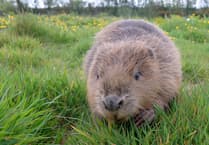November has the honour of having two moths named after it: the November moth and Pale November moth. Both fly this month but the November moth is more likely to be seen.
The November moth is active at night and is attracted to light. It is brown and cream in colour, medium sized with a wing span from 38-44mm and the forewings are variably marked with alternating pale and dark bands.
It can be seen in a wide range of habitats throughout the UK, including gardens and especially if there’s a wild space that is attractive to butterflies and moths.
The females lay their eggs upon almost any native deciduous tree or shrub, including apple, oak, sallows and hazel. Like many of the species that fly late in the year, the eggs remain attached tightly to the bare branches and won’t hatch until next spring when they can feed upon fresh leaves.
The Butterfly Conservation recommends avoiding trimming these trees and plants too often. Snipped stems and branches are laid in a pile nearby which can help protect the new generation of moths that will emerge next year.
According to UKMoths, an excellent online guide to the moths of Great Britain and Ireland, the November moth is similar in appearance to its relatives the Pale November moth and Autumnal moth and it can be difficult to tell them apart.
However, the November moth is the most widespread and common, so is more likely to be seen. Another relative called the Small autumnal moth is smaller and more well marked, so easier to tell apart from its relatives.
A phenomenon called Melanism is common in the November moth. This results in an excess of dark pigmentation (melanin). In some locations, all-dark individuals make up the majority of the November moth population.

Many moths show melanism and one species became famous. The Peppered moth, often found in gardens, is usually all white, peppered with black dots on both the wings and body.
But an all-dark form became the dominant type in certain parts of northern England. In response to high levels of pollution during the Industrial Revolution, a phenomenon called industrial melanism.
However, this black form has been steadily declining in those areas as pollution has decreased. There are intermediate forms which are variable between the light and dark forms.
The story of the Peppered moth’s evolution from peppered white to an all-black form in response to air pollution made it famous as one of the best-known examples of Darwin's great discovery: evolution by natural selection. It was therefore often referred to as “Darwin's moth”.
The Peppered moth is common throughout the British Isles though more locally distributed in Scotland. It has a wingspan from 44-56mm and can be seen in woodland, scrub, hedgerows, parks and gardens. However, you are unlikely to see it flying this late in the year.
You can also help next year’s springtime butterflies by planting bulbs now. According to the Butterfly Conservation, the best for butterflies and moths include Grape Hyacinth, Hyacinth, Native Bluebell and Crocus. If you are interested in helping bees, choose plants like Allium, Gladiolus and Snake’s-head Fritillary.
You can help butterflies, moths and other insects by creating a “wild space” – an area improved to help these insects thrive. Make your plans now: the Wild Spaces website (wild-spaces.co.uk) has ideas and advice!





Comments
This article has no comments yet. Be the first to leave a comment.